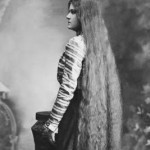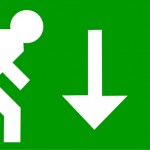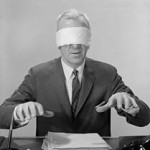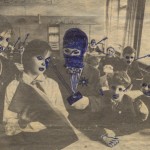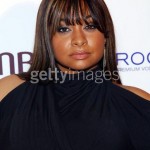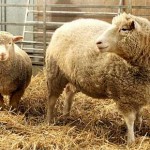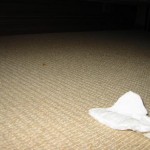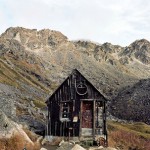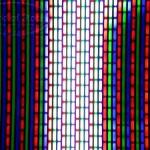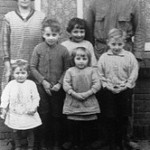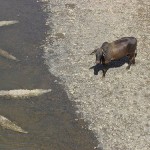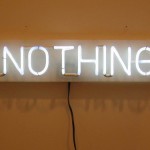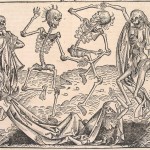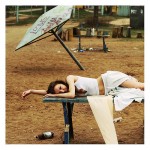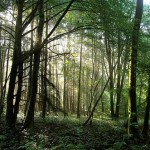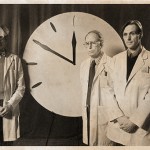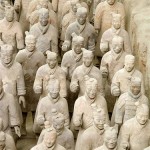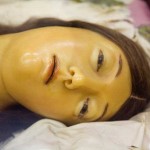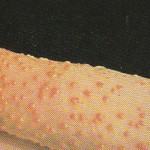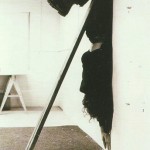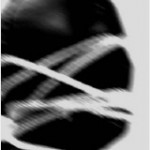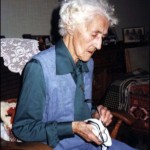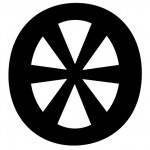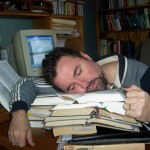Wednesday, November 18, 2009
When DHL delivered the package with the traditional Zeeuws costume to the Bristol Hotel in Athens, Greece, I immediately ripped it open, only to find a stack of different fabrics in various sizes, textures and colours.
I had no idea what to do with these mostly two-dimensional pieces of cloth, what was supposed to go where and how.
This knowledge-gap became the works’ major point: what is the perception of a traditional cultural expression by someone from another country (and in this case I regard the city of Amsterdam as another country in relation to Zeeland as well) grown up in an era where self-examination and focusing on the present and future prevailed over historical awareness and/ or cultural pride.
In short: a young Danish woman of gigantic proportions who happened to pass by on the streets of Athens was lured into the hotel room, to be dressed and undressed in different combinations by an innocent Greek woman, using the separate elements of the costume to create a whole new image of national identity.
Barbara Visser, Winner of the Dr A.H. Heineken Prize for Art (2008) check out her new website.
Medium Girl (1996)
video, 6 x 30′
Wednesday, November 18, 2009
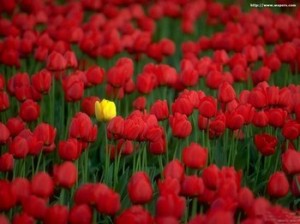
Looking at a books presence before next to a wide space of absence and how present that book was my next step was to look at a book that was remarkably present even though surrounded by other books.
The book i chose was chosen not because it was larger or a different colour than the other books but because it, the book itself was a paradox- the text, the material the book was made out of, the size. None of these things matched or linked up.
It was an odd book. And for me the books it was surrounded with all conformed to each other. They were all self explanatory and true to their own individual format.
Wednesday, November 18, 2009
DISORDER, word that I picked up in the book S,M,L,XL by Rem Koolhaas, by playing my childhood game, haunted me while I was in a library second time. I knew that I wanted to find something that will help me compensate this strong feeling of mess and confusion that word DISORDER brings, something that will deal with it clearly and simple, something that tends to organize and systemize.
The perfect solution and pick was a book about simple system of visual organization: THE GRID, that provides rich overview of this purely proportion, symmetry and geometrical based system of organizing type.

Rietveld Library code: 757.3 -ella-
Wednesday, November 18, 2009
The action is quick. The ‚NEW‘ tag directs my steps to the transparent shelf with the top new books in the library. The first book that I see has:
–yellow background cover
–big, white and fat number 79
–long list of black titles, each one written with the different font
–straightforward title Seventy-nine Short Essays on Design
Everything is clear now, this must be the book on design ( I reassure myself that it belongs to the industrial design section), therefore fits for the project.I look at the hopefully new publishing date, and this is the only disappointing moment: 2007. I can not find any newer design book on the top new books shelf. The title of the very first essay says: Warning: May Contain Non-Design Content. If the librarian would read all the books they get, how should they react to such statement? What the amount of the Non-Design Content would move the book out from the design section? What date would put it out from the top new books shelf?
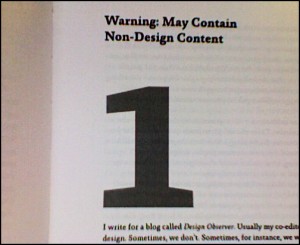
Non-Design Content
Rietveld Library code: 770.6-bie-1
Wednesday, November 18, 2009
Yet again I came back with a book about gold. About golden jewelry this time. It was not my intention to do something with gold again. Gold was one of my tag words, but I preferred to do something else. I had other tags to search for, like “meeting an old lover” “attraction” and “recognition.” So I went searching…. When I saw this golden jewelry book I could not take my eyes of it. I felt so cheap and wrong to take something goldish like again, but I felt really good in the same time. I could call this second journey “the irresistibility of wrong things” or “why we like to do wrong things?”, which sounds like the title of a novel. Interesting question actually. A question where you could have many thoughts about. For myself I didn’t found an answer to it yet.
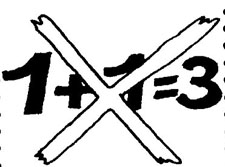
Rietveld Library code: 777.6 cat172
Tuesday, November 17, 2009
A hole, a crack, a black space – consisting of nothing!
I came to the bookshelf to choose my book and what i found was a book on its own and a large space which seperated it from the main body of the other books. The absence of something was so present for me in its tension that it drew my attention to that spot right away. Like the suspense of quiet in between movements of musical symphony the quietness was pointing and preparing me for this one very special book.
Rietveld Library code: *7399*
Tuesday, November 17, 2009
The second time in the Rietveld library to search for a book that I know nothing about yet.
The only thing I know is the mantra I keep repeating in my head. The mantra consisting of my last tag words. I pull a few books from the bottom shelves but none of them seems to be the right one.
Until I pull out a thin, square book of which the library code consists of the letters e a t (might be “cat” but i still read it as “eat”). The second thing I looked at was the back cover. It’s full of scratches. What happened with this book if you go beyond “it’s used as a cutting mat”?
I found it more then appropriate.
Eating; the everyday activity.
Square; meaning boring.
Thin book, bottom shelve; forgettable.
Scratches; popping up of questions.
My mantra of automaticlivesoblivionstorymaking was answered.
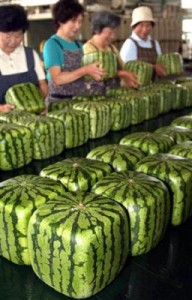
Rietveld Library code: 705.8 eat 12
Tuesday, November 17, 2009
Where in the fist book the absurdity of life is discussed in a very airily funny and positive approach, this books deals with the same theme, but in a very confronting real way. This book is about the things and facts of life as well. Most photographs are shocking and horrifying, but they tell the story of history since 1955. It’s a book about photojournalism. Despite all the nasty images there are also beautiful pictures included, some of famous photographers. Though there’s definitely a shadow hanging over this book and it’s called reality.
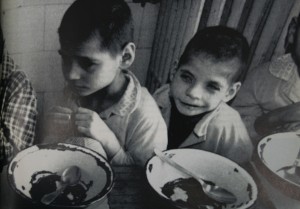
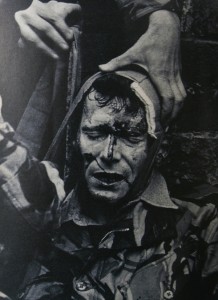
The search for a book with the same tag words was pretty hard. I was exactly looking for the other more confronting realistic side of the absurd things in life. In the end I think this is really a book that suits exactly that subscription and therefore the same tag words as my previous one. I think it‘s his serious brother.
Rietveld Library code: 761.6-pan-1
Monday, November 16, 2009
The Session is an Amsterdam based thematic fanzine run by a group of artists and designers. The Session takes place for one day every second month, during which works around a specific theme are being made.

The group uses different methods and media, from drawing to research to songwriting. There are as few rules as possible in order to keep things open and uncomplicated. The members of the group are taking turns in deciding the theme to work with, members can invite guests to join a session. The member deciding for the theme of an issue is the publisher and responsible for editing, design and (re-)production. This means that every issue will look different, that every issue will be compiled with a different approach and produced in a different way, testing out formats and techniques. The Session is a flexible container for any kind of content, trusting in the spontaneous quality of its Sunday-afternoon outburst. Issues released so far are:
(1) The Banana Session (September 2007)
(2) The Colo(u)r Session (December 2007)
(3) The Weapons & Armour Session (February 2008)
(4) The Secret Session (March 2008)
(5) The Holiday Session (June 2008)
(6) The Psychedelic Session (September 2008)
(7) The Obsession (January 2009)
(8) The Amsterdam Session (May 2009)
(9) The Last Session (September 2009)
The Session are: Monica Tormell, Tomas Adolfs, Staffan Björk, Tarja Szaraniec, Matthias Kreutzer, Kalle Mattsson, Orpheu De Jong and Jens Schildt.
http://www.thesession.nl
http://www.myspace.com/thesessions
http://www.thelastsessionradio.com
Monday, November 16, 2009
At March 16th 1992, Cornelia, Jane, Greetje, en Weimpje Koelewijn Vermeer cleaned the pavilion of the Gerrit Rietveld Academie.
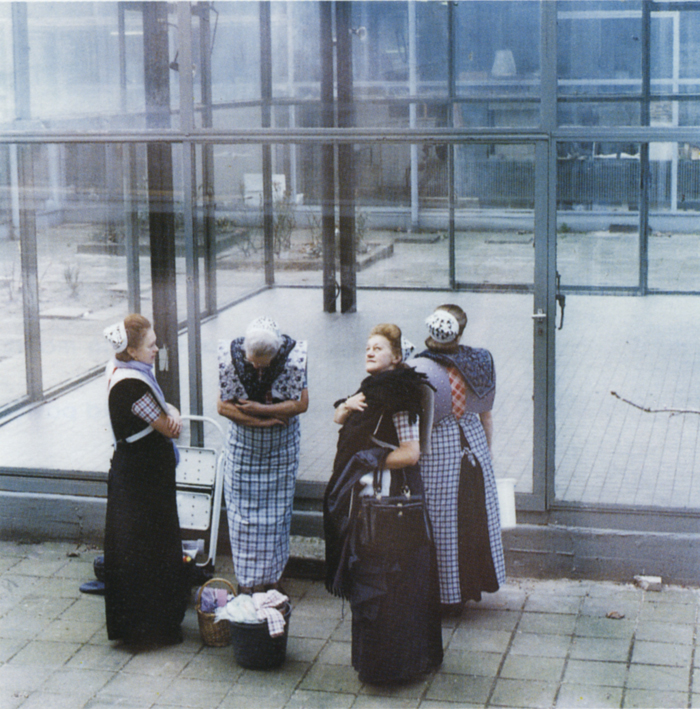
the soberness and functionality of Rietveld
the neatness and the costume of the women from Spakenburg
respect
space – light – color.
a women that cleans will not lose her morality.
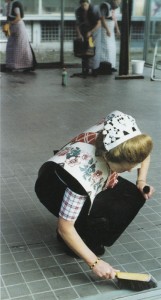
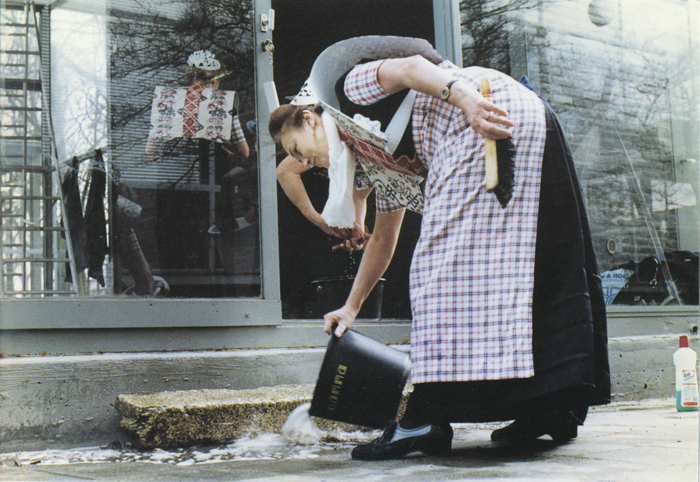
Job Koelewijn, Winner of the Dr A.H. Heineken Prize for Art (2006) talks.
photo’s by Erik van de Boom, reprinted from Rietveld Publication no 76
By Henk Groenendijk
/ Categories: Folklore Project, performance, photography, product design Tags: clean, color, customs, Job Koelewijn, light, memory, respect, space, women
No Comments
Monday, November 16, 2009
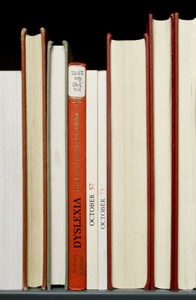

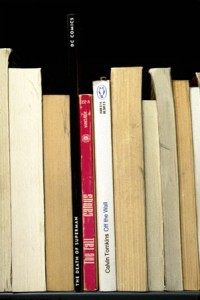
The library is a vault of knowledge and place of opportunities and inspiring meetings if only you know the combination to open it up.
In an attempt to expose that hidden treasure for ourselves we have to find out what we are searching for. Not aimed at 1 specific objective question but in an effort to make our personal focus manifest. Searching and naming (tagging) our find.
What if…, we were to browse through it, just like we so often browse the Internet, on association and intuition? Would we be able to unlock it and find hidden treasures. We probably would and we might also find out why the fast information that we find on the internet, the superficial re-shuffling of opinionated facts and loads of images, desperately requires editing. We might find an answer to the question, why more books are printed than ever and libraries thrive.
40 students set out to “browse” the library in that state of mind, showing what happens if you just release your preconceptions and start doing it. All their adventures can be read under the category >“subjective library” project<.
The tags they created in that process became part of the Designblog’s monumental tag list.
Monday, November 16, 2009
“subjective library” on Flickr
click on the images above to find some of the tags as we translated them into images for you. If you want to check them all out go to …… Flikcr.com /subjective library /click people link
selection made by Matthias Kreutzer and Henk Groenendijk
By Henk Groenendijk
/ Categories: image + language, Subjective library 3 Tags: airplane, Anita, archive, associations, attraction, Canada, compulsive, connection, embroidery, escape reality, eyes, first sight, hundred years, identical, imagination-tt, library, life, mass production, mystery, mysticism, normal, nothing, oblivion, part, pictures-tt, random, raven, reduced, secret, selection, seriouness, subjective, television, theft
No Comments
Monday, November 16, 2009
Amsterdam based Visual artist and archivist Tjebbe van Tijen (1944) works since 1988 under the name Imaginary Museum Projects consisting of regular lectures, performances and publications on subjects like social memory, psycho-geography, media history, mapping of human violence and visual language. Especially interesting in this project are the “Museums in our Minds Scrolls” that he is making. To view the strips of images, he build a special wooden viewing device with handles that one had to turn to scroll through the strips, a manual scroll-bar really.
link to the Imaginary Museum Homepage, or read the interview that Geert Lovink had with him in 2004
In his celebrated book “Le Musée Imaginaire”, Andre Malraux (1901) developped the idea that the world of reproductions forms a “museum without walls“ a museum in your head. A virtual museum read more:
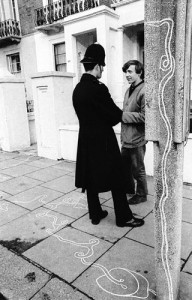
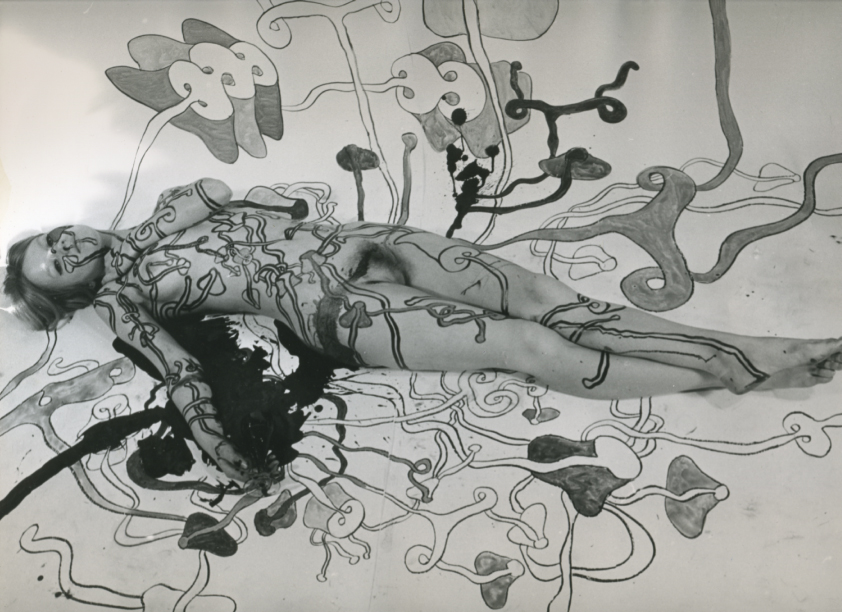
Continuous Drawing by Tjebbe van Tijen. Photographs with permission of Pieter Boersma. Coll. H. Groenendijk
One of Tjebbe van Tijen first “actions” was “the continuous drawing” organized by him and students of the London ‘Sigma Centre’ in 1967. The “continuous drawing” came out of a Londen sewer and travelled to The Netherlands. Two parallel lines, continuously branching and looping creating organic forms. True streets, onto cabs,in the airplane and thrue Schiphol Airport, over the streets, into the Stedelijkmuseum where it continuous on the stairs, to the terras, covering visitors and statues until it ends as a projection in a smoke filled dome, as if desolving in smoke. This project was initiated by the City of Amsterdam Municipality, Tourist Promotion and various Art Foundations in A’dam and R’dam. Other participants were a.o. Willem Breuker (musician), Theo Botschuijver (industrial designer), Graham Stevens (architect), Pieter Boersma (photographer). His took the initiative for a documentation center on art, technology and society at the Sigma Center and Stedelijk Museum (1967-1969) and was later founder and curator of the Documentation Center of Modern Social Movements at the University Library and International Institute for Social History in Amsterdam
sources: “Actie, werkelijkheid en fictie in de kunst van de jaren ’60 in Nederland” (Action, Reality and Fiction in the art of the sixties)©’79, Mediametic, Gandalf #19 ©’79. imaginary Museum
Sunday, November 15, 2009
The appearance of Muhammad in Arabia in the year 610 had no effect whatever on art in Arabia and no common single homogenious Islamic style is to be found from India to the Straits of Gibraltar. All kinds of influences, in accordance whit local conditions, are evident such as for example, Antique, Early Christian, Byzantine, Phoenician, Hebraic, Babylonian, Assyrian, Persian, Egyptian, and even Indian influences. These together whit what remained of Arabian art, combined whit their own original contributions, were all formed into one whole one single new style.
As the pictorial reproduction of men and animals was forbidden by the Islam religion, Islam art was obliged to confine itself to geometric and vegetable Ornament. This command however appear to have been promulgated in the later periods of Islamism and to have originated in the fanatism of the Mohammedan priesthood, for animal ornaments have been found which date from more ancient times. There is a general absence of plastic work in Islam art, the moslims appear to have had no understanding for this class of work.
For information about this subject link for a large two part documentary to google video ….
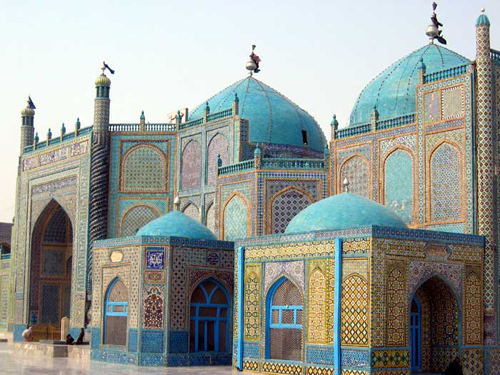


Sunday, November 15, 2009
A walk in to a wall. Different walls are facing me.
Hello I said to her.
She said hello to me.
I talked with her for a very little time.
The thing she said to me was red.
In points I agreed in some points I disagreed.
But in conversation with especially her cover I became curies.
Why is it that she said hello.
Why the others didn’t said hello.
She is not very beautiful at all, not very interesting either.
The word she chooses to say hallo was regular.
But it brought me to another level of being aware.

Rietveld Library code: ?
Saturday, November 14, 2009
Walking in the library. Looking for something who is nothing, at the same time. All the covers of the books are staring at me, they are all something. Then I find…
This book, black.
This book, German language.
Attracted, white lines on the cover.
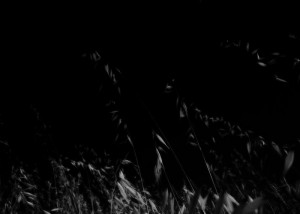
The lines going to the nothingness of the black. I want to walk in the cover to see and feel the nothingness around me. Like standing somewhere on a field in the middle off the night.
This book, I can’t read because the language.
This book, with a very disturbing content.
Attracted, understand what I don’t understand.
Let me know, I whisper. Let me know…
Rietveld Library code: 774.4
Thursday, November 12, 2009
Image instead of font, relaxed instead of compulsive, everything except cats: these are the tags of the book I picked. No relation is a relation as well, and thus is this lack of relation the perfect link between the first and the second book. I found an objective way to link this post to my earlier post. This book pulled my attention in the same way it is linked to the other book: the big differences. Was the first book white, about fonts and having a sort of mysterious neurotic repeating cleanness, the second book is colorful, filled with images, hundreds of subjects and a bit of chaos. Browsing through the pages you see countless interesting illustrations, which make you want to take a closer look but also make you want to look further; are there more images like these, are there better images then these, could it become better then this? It makes you want to draw or make such images too: images from which you can see there was a lot of work in it or absolutely not much work. The amount of work is of no importance, the works are intriguing.
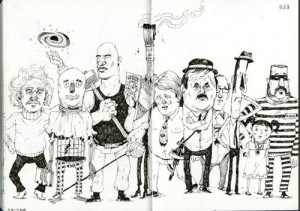
Rietveld Library code: ?














